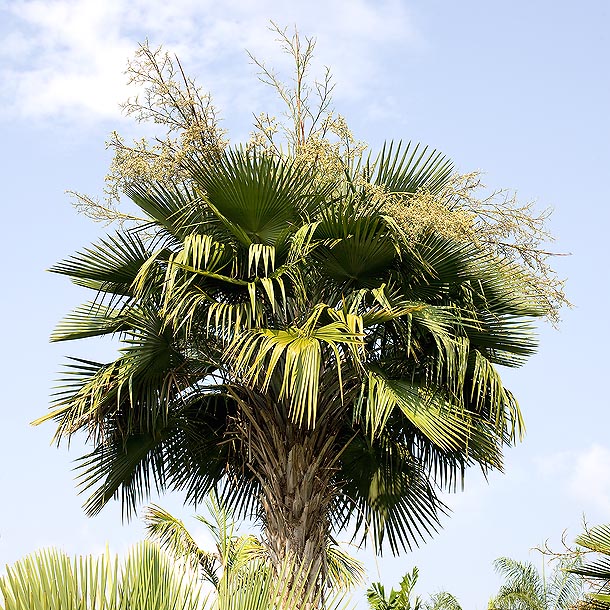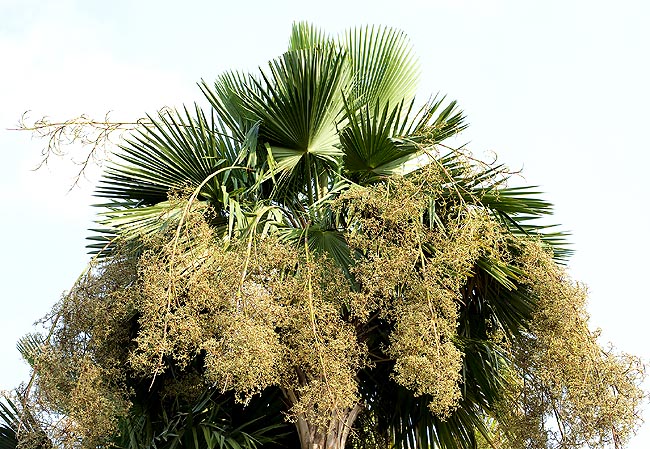Family : Arecaceae

Text © Pietro Puccio

English translation by Mario Beltramini

Out of Hispaniola, where it is endemic, the Copernicia berteroana is little known © Giuseppe Mazza
The genus is honoured the Polish astronomer Mikolaj Kopernik (in Latin, Nicolaus Copernicus; 1473-1543); the species is honoured to the Italian physician, naturalist and explorer Carlo L.G. Bertero (1789-1831).
Common names: dyaré, latanier cave (Haitian); yarei (Dominican Rep.).
The Copernicia berteroana Becc. (1908) is a monoeicious plant with single stem, tall up to about 10 m with a diameter of 20 cm, smooth, of brown grey colour.
The numerous leaves are palmate, almost circular of about 1 m of diameter, of pale green colour with several rigid segments united at the base for about two thirds of its length.
The petioles, long up to almost one metre, are provided along the margins of hooked thorns, 0,3-1 cm long, and are covered by tufts of short whitish hairs.
The inflorescences generate between the leaves and extend little out of the leaves, are ramified, thick, and carry hermaphrodite flowers of cream white colour.
The fruits are ovoid, about 2 cm long, black when ripe and contain one seed only.
It is a plant suitable for tropical and subtropical climates with evident seasonality and moderate rainfalls, it may bear, when adult and for very short time, temperatures as low as -2 °C, with limited damages. The optimal exposition is in full sun and is not particular about the soil, provided the same is well drained. In fact, it is sensitive to water stagna- tions especially in connection with quite low temperatures.

The inflorescences of the Copernicia berteroana are ramified and thick © Giuseppe Mazza
It is fairly resistant to the saltiness, and therefore it may be employed close to the sea.
The stems are utilized locally in the constructions due to their strength and long durability, the leaves as coverage of huts and makeshift shelters, for making hats and other handicrafts, whilst the fruits serve as aliment for the pigs.
Its areas of diffusion have, since long, drastically reduced, for the excessive anthropization as well as for the defore- station done in favour of the agriculture, in particular for the cultivation of the sugar cane, but, thanks to the elegance of its appearance, it is widely employed as street tree, in the public parks and in the private gardens.
Outside Hispaniola Island, it is little known and its cultivation is generally limited to the botanical gardens and the private collections.
→ For general notions about ARECACEAE please click here.
